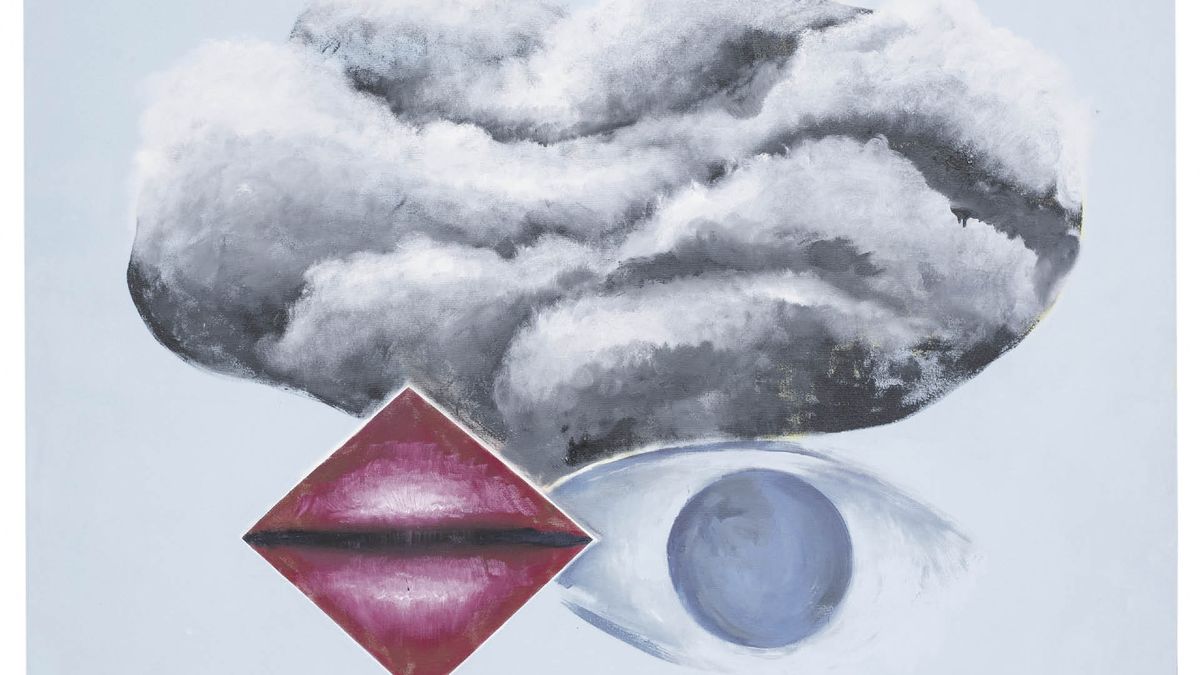Looking, thinking, painting, is what Rómulo Macció always did. Looking at the world with the very special ability to broaden the vision and feed an energy with images that sooner or later would lead to the act of painting. There are works in this exhibition that are moving due to the possibility of establishing a more direct and even visceral communication with the artist. Gallerist Orly Benzacar says that with Batkis they accessed surprising material. In an untouched folder, they found an ink dated 1964 which reads: “We have to prepare everything for the plague.” There, the crosses of a cemetery, the star of David, the hammer and sickle, a swastika, speak of the horror expressed by the disturbed face of Munch’s “The Scream”. The drawing is descriptive. Published in 1947, Albert Camus’s “The Plague” is a metaphor for the drama of World War II. Perhaps inspirational.
In this same folder, Batkis finds: “Drawings, annotations, clippings. From the 1950s to the end, everything appears in that corpus of graphic work. The crossed faces, purple with light blue, yellow with red, fluorescent green, those rounded forms of the Grupo Boa stage, which are repeated in recent work”. To confirm the words of the curator, next to the drawing where she talks about the plague and a sketch of “The Scream”, there is an almost abstract painting where you can barely make out some faces with disjointed mouths and, where the gestures of the painting predominate black that bears the recognizable stamp of Macció on the white fabric.
In a statement from 1991, the painter, little fond of theorizing about his work, acknowledges: “In what I do now there are symptoms of romanticism, always looking for density in space, the attack of the brush or the spatula, the lighting of the color and charge in the form. I had moments of intimacy in some portraits. I leaned on the art of the past (to take a leap you have to go back) I also feel that all this is a great narcissism. The painting is narcissa (sic) It is the distance, the closeness, the reflection, the loss and the reunion of the illusion and the transformation of the image seen from the solitary experience. There is a constant analogy with the past, the nearby or remote arts: everything is related to everything. […] Art is proof that living alone is not enough”.
Macció’s Italian heritage can be seen in his painting and also in his life. Although he was based in Argentina, Spain, Italy and New York, in 1983 he settled in La Boca, in front of the Riachuelo, the “half Genoese” neighborhood, as defined by the author of “Corazón”, Edmundo de Amicis. From the end of the 19th century, Pedro de Mendoza street housed various groups of great artists. Autodidact. Macció worked in advertising, but from a young age he devoted himself to painting. At the age of 25, he presented his first individual exhibition at the Galatea gallery.
Source: Ambito
David William is a talented author who has made a name for himself in the world of writing. He is a professional author who writes on a wide range of topics, from general interest to opinion news. David is currently working as a writer at 24 hours worlds where he brings his unique perspective and in-depth research to his articles, making them both informative and engaging.




